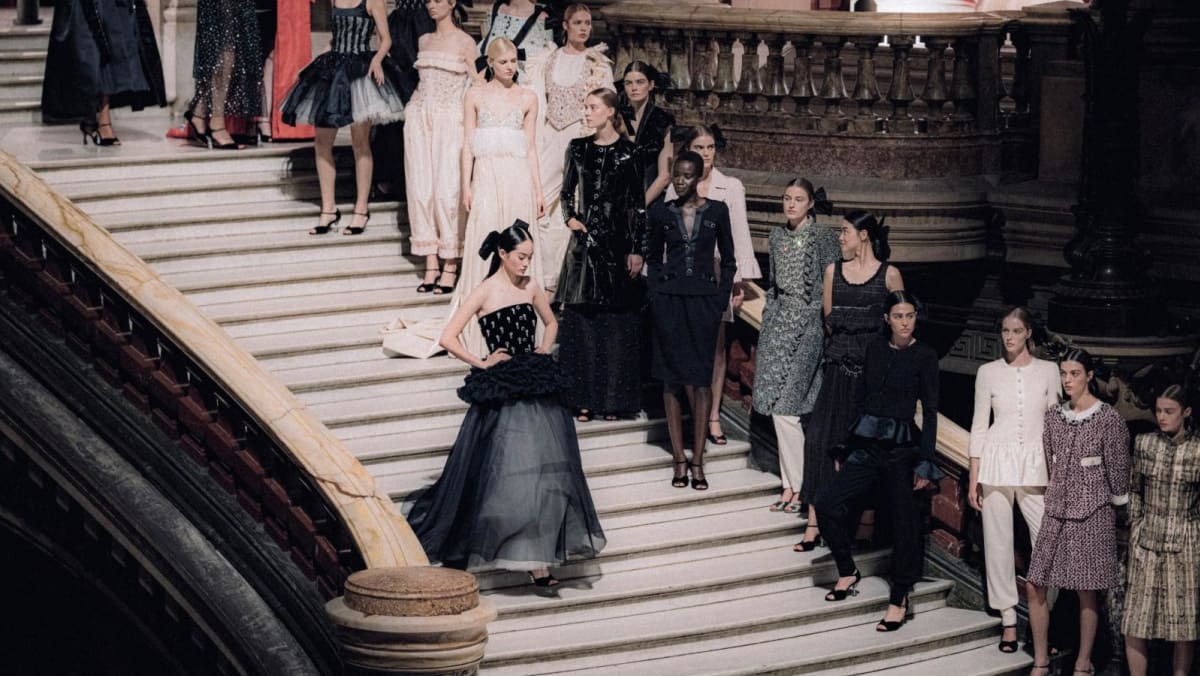Founder Cristobal Balenciaga was a master of structure and dreamt up designs that did not conform to the body. Demna sought to do the same by leaning into archival shapes, such as three-quarter, bell-shaped sleeves and cocoon silhouettes, while continuing to mine the worlds of streetwear, goth, skater and metal heads, which have inspired him during the past decade. “I wanted to come up with new things that could enrich the couture technique vocabulary.”
As for the clothes, with the exception of a few skirts and gowns, they were mostly big, baggy, utilitarian. Jersey and denim jackets and track pants looked like they had been thrown on and wrapped around the body, or flipped upside down. Plastic bags and aluminium foil were processed and upcycled into one-of-a-kind dresses that crunched as the models walked, while eccentric hats were made from frozen-in-resin T-shirts. I mulled over whether it made sense to elevate the ubiquitous and everyday into what is exclusive and elite.
Guests including Katy Perry and Charli XCX marvelled at the finale: 47 metres of black nylon draped and sculpted on the model by the atelier less than an hour before the show. It took even less time to disassemble. The creation, resembling a life-size loofah sponge, could only be worn once, making fashion akin to having food at a fancy restaurant. “Nobody needs couture to be honest; to me it’s an experience of wearing clothes. And I wanted to take that further,” said Demna.
A fresh approach to couture is always welcome, but for something to unravel and dissipate after it had been worn once showed how much fashion, even of the highest kind, has become a byproduct of the Instagram-era. And there was something a little bit depressing about that.
Kati Chitrakorn © 2024 The Financial Times.
This story first appeared in The Financial Times.

